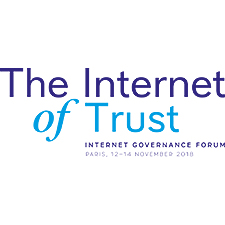Innovative approaches to connect underserved areas
14 Nov 2018 09:00h - 10:30h
Event report
[Read more session reports and live updates from the 13th Internet Governance Forum]
The objective of the session was to discuss the unique challenges community networks face worldwide and some of the innovative projects currently implemented to address them, while working with partners to amplify local sustainability and empowerment.
The moderator, Mr Peter Bloom, Rhizomatica, raised the issue of what innovative approaches should be put in place to connect the growing number of people in underserved areas to the Internet.
Mr John Dada, Fonstuom Foundation in Nigeria, sharing his experience, related that they realised early on that low cost connectivity options and low power solutions were important options for deprived settings. He highlighted that because of electricity and the need to resort to solar power and generators, rugged and power-efficient computing solutions were optimal.
Mr Matthew Rantanen, Director of the Tribal Digital Village (TDVNet) Network/Initiative, said that lack of affordable access to back-haul solutions is a major barrier to construction of community networks. Poor access to wholesale fibre, which would speed up the construction of community networks and power supplies to support the network, is another barrier that, when overcome, would improve connectivity.
Mr Gonzalo Lopez-Barajas, Public Policy and Internet Manager, Telefonica, S.A, said, as a major telecom provider, a significant problem in extending connectivity in rural communities is the huge cost involved in deploying the network. The communities are also sparse and the return for deployment does not make economic sense. He added that to address these issues Telefonica has partnered with Facebook and Vodafone in a telephony project using affordable radio access solutions. Another means under exploration is to use high jungle trees to deploy the network, instead of underground or on-ground deployment, thus driving down costs of deployment.
Ms Ritu Srivastava, Civil Society, India, added that it is also important not to focus only on the technology, but also on human aspects of connectivity. Users need to know how to develop content and how to ensure sustainability of networks.
Mr Bill Murduck, Technical Community, Western European and Others Group (WEOG), inhis contribution said that one way to ensure that community networks increase access is to build them around sustainability models. For instance, he reported that you need to identify anchor tenants such as banks and schools who can pay, to ensure a financially sustainable model instead of a disposable model.
In response to the issue of innovative approaches, Ms Karla Valesco, Mexico, said that innovative approaches should be adopted in engaging with the regulator to attain access to the spectrum. She said, for instance, that a group of community networks were able to come together and request a social license from the regulator because their objective for the license was to extend connectivity to rural communities.
Mr John Dada added that since he considered that using optic-fiber was inaccessible to him because of high cost, a new opportunity in TV Whitespaces is being explored in partnership with a private operator. In his view, the regulator does not deny small organisations out of malice, but because the regulators are sometimes unaware of what they can do to help connectivity.
The moderator then asked that since the barriers seem to be categorised into regulatory (spectrum) issues, economic issues, and technical issues, how would the panellists prioritise them?
The view of Murduck was that all three barriers deserved consideration at the same time, or at least in combination, since they are interdependent. Gonzalo concurred, mentioning the huge costs of acquiring spectrum, and added that if governments could reduce the costs of spectrum significantly, the operators could channel extra resources to deploying the network.
Rantanen commended ISOC for its focus and support in helping community networks and believed that 2019 will be a year where connectivity efforts will be spearheaded by community networks.
The meeting came to a conclusion after the panellists took questions from the audience and among themselves to understand individual country cases and address them.
By Jacob Odame-Baiden
Related topics
Related event

